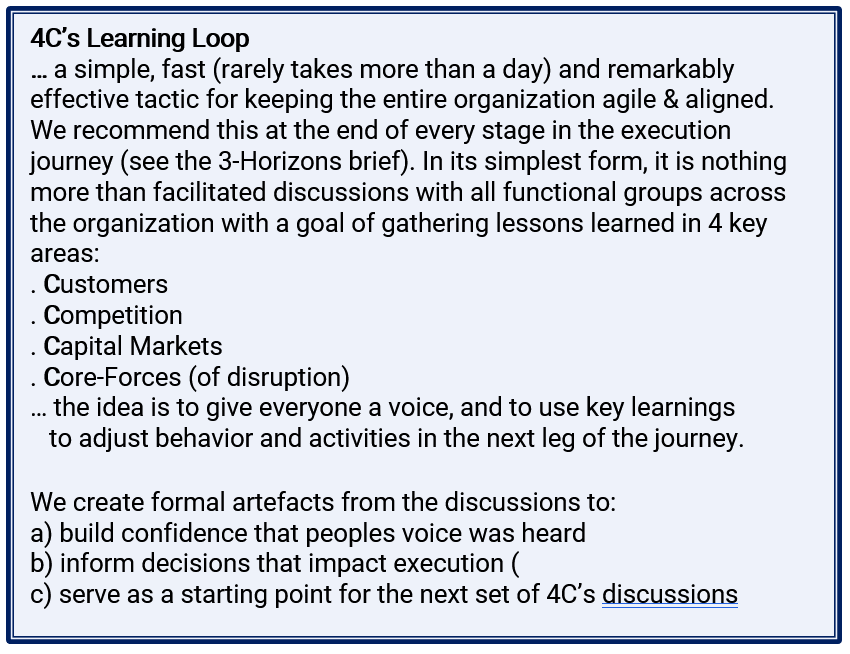3. ALIGNED END-STATE (WHAT SUCCESS LOOKS LIKE)
It’s not enough to hone your thesis and strategy on your own... you need alignment across the organization, because alignment removes friction (and because, without alignment, it’s nest to impossible to attract the resources you need to execute). We approach this in two ways. For starters, we consciously help CEO’s and innovation leaders carve out a safe zone to hone their H3 thinking without causing friction with the execution team. Then, at key points along the way, we design specific activities to engage key stakeholder layers and build alignment and momentum anchored in the WHY (the promised land), the HOW (key steppingstones) and the WHAT (execution activities).




